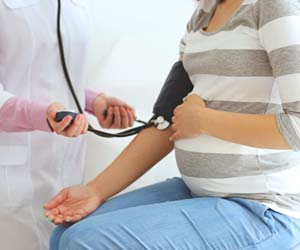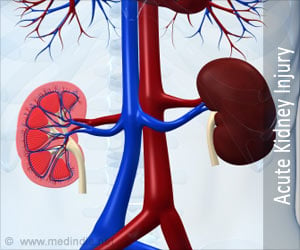Multiple metabolic disorders in mothers during pregnancy affect their children's body mass indexes later in life, where children are at a higher risk of developing obesity.

‘Multiple metabolic disorders in mothers during pregnancy affect their children's body mass indexes (BMIs) later in life, leading to obesity.’





Diet, exercise, and genetics are familiar risk factors in childhood obesity. Prenatal origins also play a role, yet they are underexplored, said Yonglin Melissa Huang, a Ph.D. student at The Graduate Center, CUNY and lead author of a new study that shows a link between multiple metabolic disorders in pregnant women and their children's BMI later in life.The study, which appears in Archives of Gynecology and Obstetrics and comes from the lab of Graduate Center, CUNY and Queens College Psychology Professor Yoko Nomura, asked how pregnancy conditions can play a role in childhood obesity. The researchers found that when a mother experiences both gestational diabetes and preeclampsia, the child has a growth trajectory that leads to an increased risk of high childhood BMI over time.
"Prospective parents may benefit from our findings by better understanding the effects of gestational diabetes and preeclampsia on their child," Huang said. "These findings can provide added incentive for pregnant women and their health care providers to work closely to manage and treat these conditions during pregnancy so they can address both the mother's safety and the child's long-term health."
The study results should also encourage health care providers to coordinate care of mothers and children who experience these dual conditions over a longer period of time following birth, said researchers.
"OB-GYNs have experience in managing gestational diabetes and preeclampsia but they do not provide care to the children or help reduce their obesity risk," said Nomura. "Coordinating between obstetricians, endocrinologists, and pediatricians could help prevent childhood obesity."
Advertisement
Nomura and her group have previously studied the associations of gestational diabetes and preeclampsia, independently, with children's BMI. In the new study, the team collaborated with Daniel W. Skupsky, M.D., chair of the Obstetrics and Gynecology Department at New York Presbyterian Queens, and explored what happens when a pregnant mother has both conditions at once since those two illness are relatively common and often comorbid. The team monitored the children of 356 mothers from 18 to 72 months.
Advertisement
These preliminary findings lay the groundwork for future studies to further explore these effects with larger sample sizes, the authors say.
Source-Eurekalert















